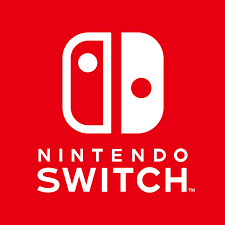Nintendo is strategically partnering with Samsung to manufacture the core processor for its highly anticipated Switch 2 console, aiming to significantly ramp up production and enhance performance capabilities. This collaboration marks a crucial move for both companies, with Nintendo seeking to avoid supply shortages that plagued the original Switch launch, and Samsung striving to solidify its position in the competitive chip manufacturing industry. The Nintendo Switch 2 is scheduled to launch on June 5, 2025.
By enlisting Samsung's chip expertise, Nintendo aims to produce 20 million Switch 2 units by March 2026. This target is a significant increase from the company's initial projection of 15 million units, indicating Nintendo's confidence in meeting the expected high demand for the new console. Samsung will utilize its 8-nanometer node technology to produce a customized Nvidia-designed processor for the Switch 2. While smaller nanometer processes generally offer greater efficiency, Nintendo's decision to use the 8nm node reportedly prioritizes cost-effectiveness and reliable production.
This partnership is a strategic win for Samsung, which has been working to compete with Taiwan Semiconductor Manufacturing Company (TSMC) in the global chip manufacturing market. Securing a contract for the Switch 2, one of the most anticipated gaming devices, will likely improve Samsung's chip foundry utilization and boost its reputation as a reliable chip supplier. Nintendo's choice to collaborate with Samsung is partly attributed to the Nvidia-based chipset being optimized for Samsung's manufacturing systems, potentially offering a more streamlined production process. Furthermore, this decision allows Nintendo to avoid competing with major tech companies like Apple and Nvidia for capacity at TSMC.
The Switch 2 boasts several key upgrades over its predecessor. It features a larger 7.9-inch 1080p LCD screen with a 120Hz refresh rate, and when docked, it supports up to 4K resolution and HDR. The console will come with 256GB of internal storage, expandable via microSD cards. It will also have 12GB of LPDDR5X RAM. The new Joy-Con 2 controllers connect magnetically and can be used as a mouse, opening up new gameplay possibilities. The console's design remains similar in thickness to the original Switch, with improvements to the kickstand and overall durability.
The console will use a custom Nvidia T239 chip with an Ampere-based GPU, delivering a significant boost in graphics performance. The Switch 2's CPU will have eight ARM Cortex A78C cores, with six dedicated to developers and two for the operating system. This division of resources aims to optimize game performance and overall system efficiency.
In addition to hardware enhancements, Nintendo is also introducing new features to enhance the user experience. The Switch 2 will have a built-in microphone with noise and echo cancellation, as well as a new 'GameChat' feature accessible via a 'C' button on the right Joy-Con 2. This feature will allow players to chat with friends and share gameplay footage, initially offered as a free trial until March 31, 2026, after which a Nintendo Switch Online membership will be required.
The Nintendo Switch 2 will support both physical and digital games, including compatible titles from the original Switch library. Select first-party games, such as Metroid Prime 4: Beyond and Pokémon Legends: Z-A, will be simultaneously available on Switch 2 with enhanced graphics and performance.

















